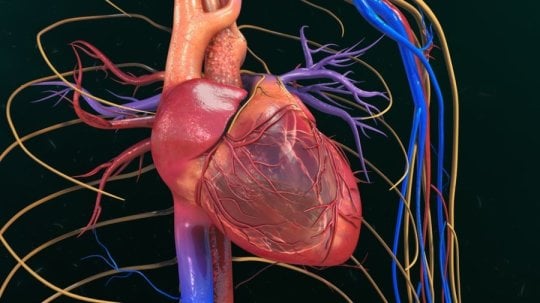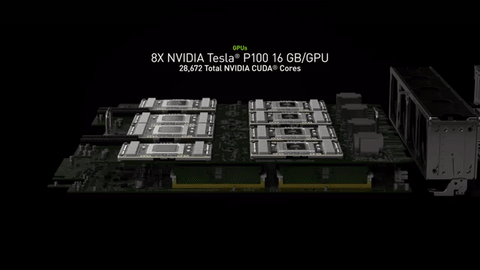
Now that you are stuffed from your Thanksgiving feast, let’s talk about the future of food!
Food and agriculture accounts for about 5.9% of global GDP.
Global food retail sales alone account for about $4 trillion a year, and food accounts for 15% of what American households spend each year.
It is an industry ripe for disruption.
In this blog, I’ll be covering how converging exponential technologies are reinventing food. We’ll discuss:
- Bioprinting meat
- Vertical farming
- Artificial Intelligence-driven food design
- On-demand food
Let’s feast!
P.S. Send any tips to our team by clicking here, and send your friends and family to this link to subscribe to Abundance Insider.
Food Production:
While this arena is going to change dramatically, we forget how much food has already changed over the past two centuries.
In 1790, farm jobs accounted for 90% of U.S. jobs, compared to <2% today.
While farming jobs have been lost to automation, the global food supply (per capita) has steadily increased.
As we move towards a world of food abundance, here are the top five disruptions shaping the future of food production:
1. Bioprinting of Meat:
In 2016, it took 63 billion land animals to feed 7 billion humans. It’s a HUGE business. Land animals occupy one-third of the non-ice landmass, utilize 8% of our water supply and generate 18% of all greenhouse gases.
Modern Meadow, a Singularity University company hopes to disrupt that industry by using bioprinting (tissue engineering and 3D printing) to grow meat (beef, chicken and pork) and leathers in a lab.
In 2016, the Brooklyn-based company raised $40 million with the goal of becoming the top source of leather for the world’s makers of fashion and accessories, luggage, sporting goods, upholstery and furniture. Their vision is to do this at scale and dramatically reduce the environmental impact of meat and leather production.
In success, bioprinting of meat (beef, chicken, pork) has huge advantages for humanity. By bioprinting of meat, we would be able to feed the world with 99% less land, 96% less water, 96% fewer greenhouse gases and 45% less energy.
2. Genetically Engineered Crops (GMOs):
There has been a lot of outcry from the uneducated public about GMOs. After 30 years of research, a great many of our fears about genetically engineered products have been quieted. The fact is that GMOs have allowed us to feed the world -- saving millions of lives and -- to my knowledge, have never caused anyone medical harm.
Humanity will increasingly rely on genetically engineered crops. In 1996 there were 1.7 million hectares of biotech crops in the world; by 2010, the number had jumped to 148 million hectares. This 87-fold increase in hectares makes genetically engineered seeds (GEs) the fastest-adopted crop technology in the history of modern agriculture.
In 2016, over 75% of crop yield in the United States was genetically modified.
More than a trillion GMO meals have been served, and not a single case of GE-induced illness has turned up.
So where might scientists engineer GMOs crops in the future? How about:
- Crops that grow faster, using sunlight more efficiently
- Crops able to grow in saltier waters as sea levels rise
- Crops able to grow in more arid lands
- Crops packed with specific nutrients
3. Vertical Farming – Closer to Home:
Incredibly, the average American meal now travels 1,500 miles before being consumed on your plate (e.g. beef from Argentina, wine from France and cheese from the American Midwest).
Because 70 percent of a food’s final retail price comes from transportation, storage and handling, these miles add up quickly.
Imagine instead having your food grown a few miles from your home, in the center of your town. The concept is called vertical farming.
Vertical farming involves growing food in a specially outfitted high-rise building down the street.
The impact of technology here is powerful. Imagine a building where different food is grown on each floor. Where artificial intelligence controls the exact frequency and duration of light, as well as the pH and nutrient levels of the water supply.
Vertical farms using clean-room technologies avoid pesticides and herbicides, and the fossil fuels used for plowing, fertilizing, harvesting and food delivery.
Vertical farms are immune to weather, with crops grown year-round. One acre of a vertical farm can produce 10x to 20x that of a traditional farm.
This concept is already underway. The vertical farming market was $1.1 billion in 2015 and projected to exceed $6 billion in 2022.
4. Plant-Based Meat Alternatives:
Recently I spent time with the CEO of Hampton Creek Foods. Hampton Creek is an incredible company turning plants into foods that look and taste just like meat and eggs.
Hampton Creek's data scientists are actively weeding out billions of proteins from hundreds of thousands of plants to learn what could form the equivalent of a chicken's egg.
The company argues that its “method for producing egg-like, plant-based foods is, in fact, 48% more cost-effective than traditional eggs.”
Over the last two years Hampton Creek has raised $120 million, bought four product lines to market (Just Mayo, Just Cookies, Just Cookie Dough, Just Dressing), sells products in 15,000+ locations, and has an estimated $30 million in revenue.
Food Preparation:
The United States consumes nearly 1 billion meals per day and spends an average of 10.5 million minutes on food preparation and cleanup each day.
Here are the top four disruptions shaping the future of food production:
1. 3D Printed Food:
Companies like 3D Systems, Natural Machines, Print2Taste, and others are experimenting with 3D printed food. While 3D printing in chocolates and sugars is well underway, we’ll soon see 3D printed starches, proteins (and even new proteins like algae and insects) and spices. In fact, the military wants to “customize nutrition” for each soldier in the next few decades, and it’s betting on 3D printers to do it. “Food could be printed with the exact requirement a warfighter need,” says Lauren Oleksyk, a food technologist at the US Army’s Natick Soldier Research, Development and Engineering Center.
2. Personalized Nutrition:
Our genome, microbiome and even our blood type determine how we respond to certain foods/nutrients. Imagine if a 3D printed meal was custom produced depending on the amount of exercise you had that day, and your vitamin blood levels. Advanced biosensing will drive your diet and close the loop.
3. Artificial Intelligence-Designed Recipes:
IBM’s Watson uses machine learning to construct new recipes and cocktails that no human chef would come up with. This algorithm matches foods based on extensive taste profiles and chemical makeup of those edibles in their database. In 2015, IBM launched Chef Watson so you can leverage artificial intelligence at your next dinner party. We tried a few of Watson’s cocktails in previous years Abundance 360: Hoof-n-Honey Ale (veal stock, grilled beef and IPA), Plum Pancetta Cider (bacon and cider), and Corn in the Coop (old fashioned with chicken).
Food Delivery:
Latest estimates suggest that over a million meals are requested for delivery on delivery apps like GrubHub, Postmates, Doordash and UberEATS.
Here are the top two disruptions shaping the future of food delivery:
1. Food On Demand:
Press a button and food will be at your doorstep in minutes. PitchBook Data reports that companies involved in delivering groceries and meals in the region attracted $433 million in funding last year. That’s up from about $68 million in 2013 and only about $21 million in 2012.
Companies like UberEATS, Munchery, and many others deliver high-quality, restaurant and chef-prepared food to your doorstep on demand.
Since launching last year, UberEATS has partnered with hundreds of restaurants and made tens of millions of deliveries.
2. Drone Delivery:
The commercial drone market is worth an estimated $552 million in 2016. There is a lot of buzz about drone delivery in Silicon Valley from companies like Amazon and Google, particularly with legislative strides made by the Federal Aviation Administration (FAA) this past August.
Current regulation covers unmanned aircraft weighing less than 55 pounds (25 kilograms) flown for “routine non-hobbyist use.” In fact, Domino’s pizza delivery has already began in New Zealand earlier this year. "It doesn't add up to deliver a two-kilogram package in a two-ton vehicle," said Scott Bush, a general manager for Domino's Pizza Enterprises, which is independent of the U.S. chain and operates in seven countries. "In Auckland, we have such massive traffic congestion it just makes sense to take to the airways." The company plans to broaden its New Zealand drone delivery in early 2017, including at night. Domino’s has previously shown interest in alternative delivery services. In New Zealand, Domino’s only sells pizzas in one size, which simplifies the challenge of a drone trying to fly in windy conditions with a large pizza box.
How are you going to capitalize on the changing food economy?
As technology converges, the future will be a tasty, and abundant, one.
Also read: TOP 50 MOON SHOTS (2000 - 2020)
WHAT IS ABUNDANCE INSIDER?
This email is a briefing of the week's most compelling, abundance-enabling tech developments, curated by Marissa Brassfield in preparation for Abundance 360. Read more about A360 below.
WANT MORE CONVERSATIONS LIKE THIS? - JOIN ME
At Abundance 360, Peter's 360-person executive mastermind, we teach the metatrends, implications and unfair advantages for entrepreneurs enabled by breakthroughs like those featured above. We're looking for CEOs and entrepreneurs who want to change the world. The program is highly selective. Apply now for Abundance360 Summit if you'd like to develop an Abundance mindset.
Know someone who would benefit from getting Abundance Insider? Send them to this link to sign up.
P.S. I've just released a podcast with my dear friend Dan Sullivan called Exponential Wisdom. Our conversations focus on the exponential technologies creating abundance, the human-technology collaboration, and entrepreneurship. Head here to listen and subscribe.







